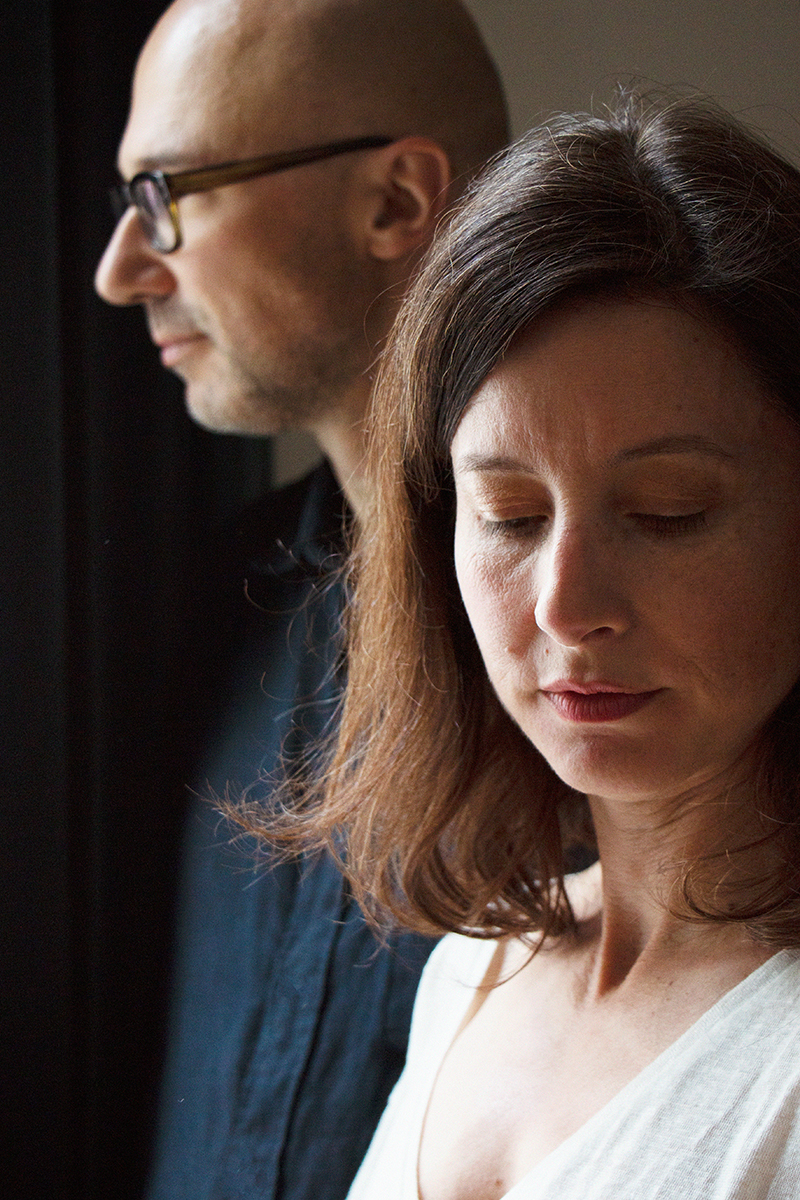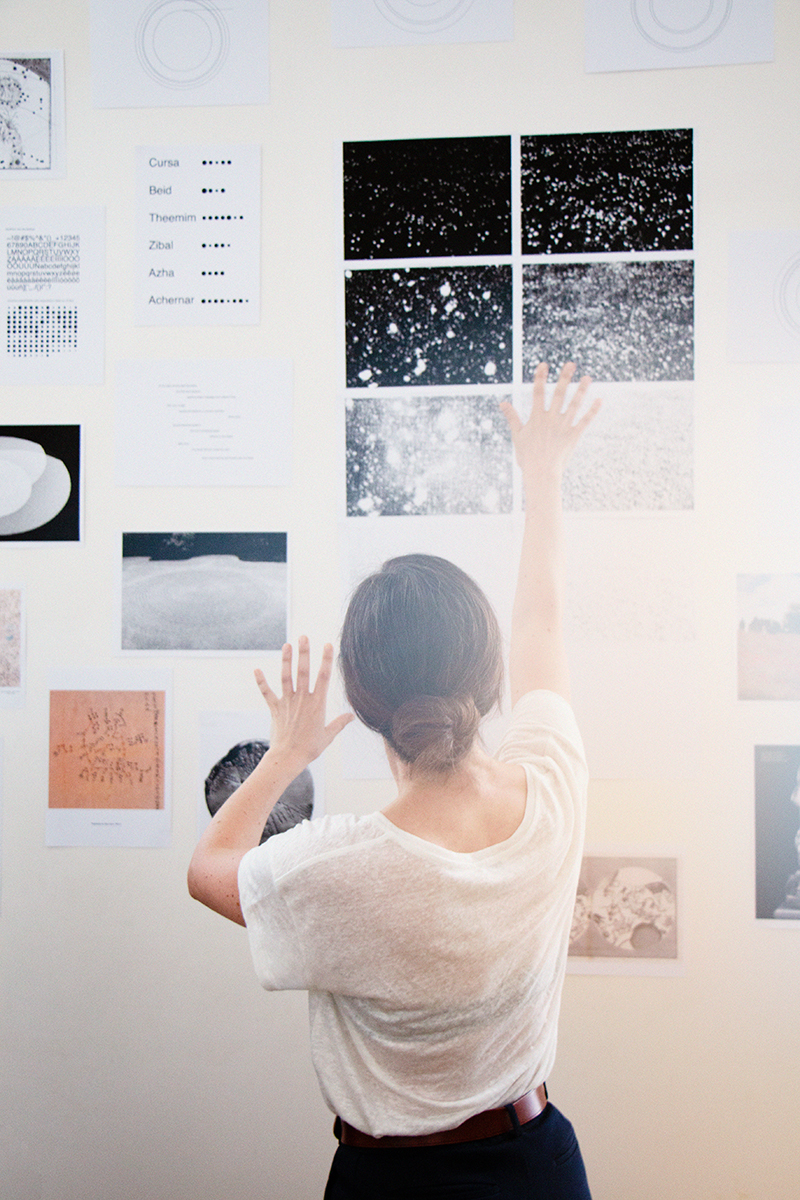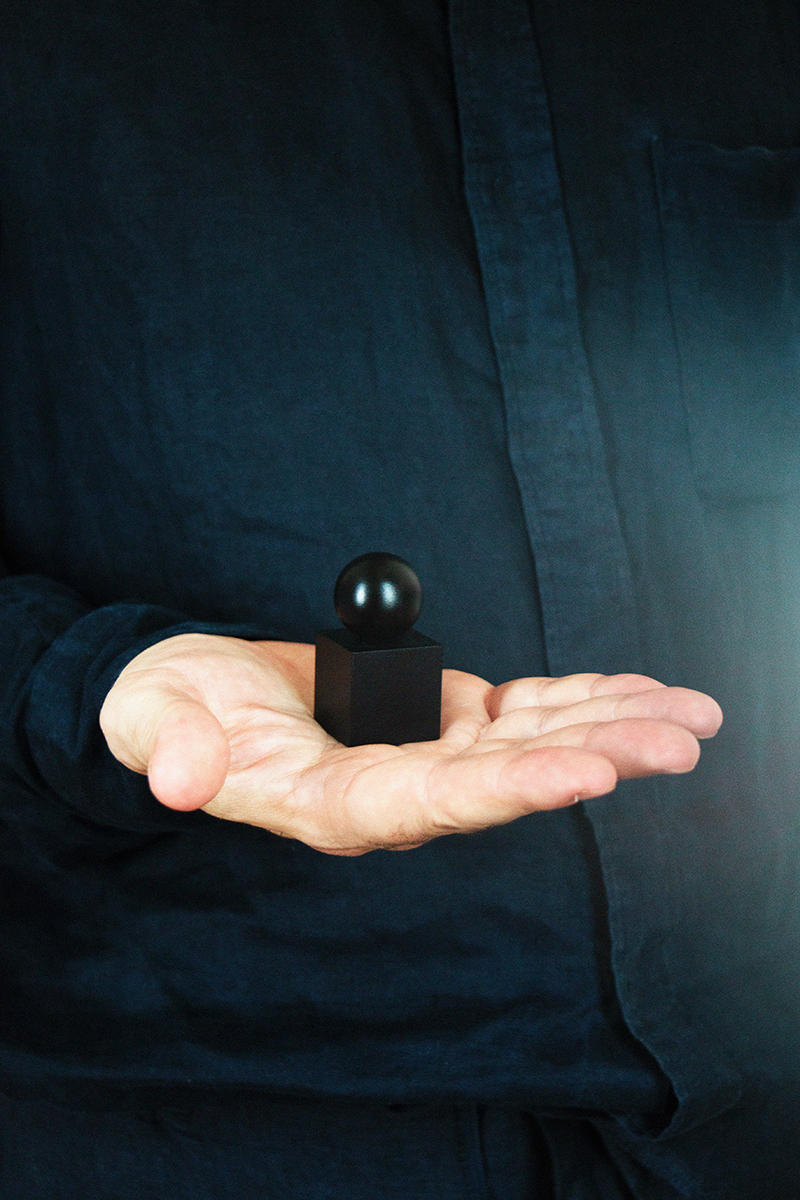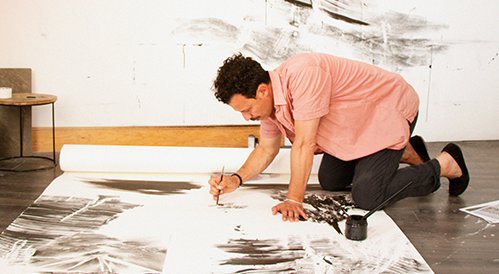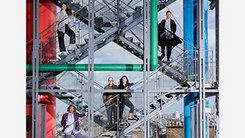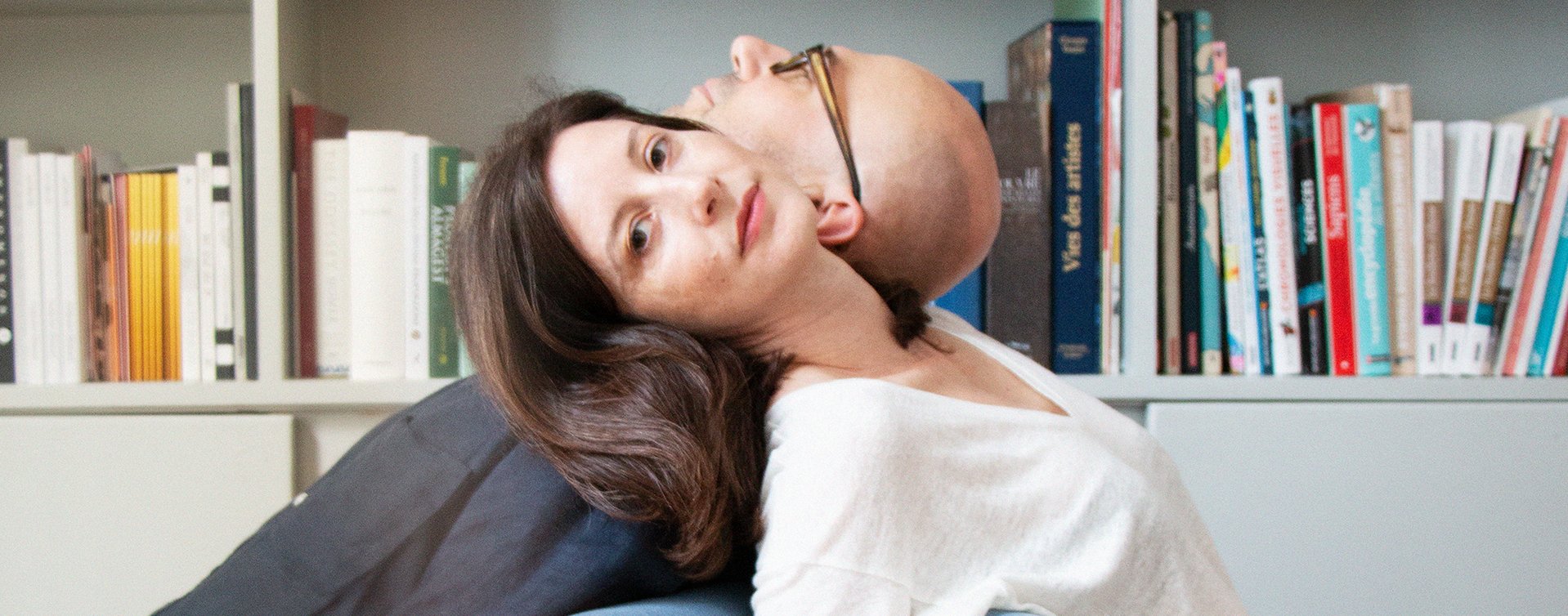
Angela Detanico and Rafael Lain's Graphic Cosmogonies
We meet Angela Detanico and Rafael Lain in a café near the Centre Pompidou. They live just round the corner. “We’ve lived nearby since we arrived in France over twenty years ago,” the duo says in unison, arriving a little ahead of time. “We couldn’t imagine living anywhere else.”
There are artists who defy any system of classification—Angela Detanico and Rafael Lain are among them. Collaborating seamlessly, they explore the intersections between language, space, and time, from the infinitely large to the most mundane. Their hybrid work, positioned at the crossroads of visual arts, typography, and semiotics, adheres to the strict codes that shape our perception of the world, only to transcend them—allowing the most subtle poetry to blossom from their seemingly austere frameworks.
In collaboration with Art Basel Paris
Sitting across from us in the bright light of this early afternoon, they recount the beginnings of their fruitful collaboration, their lilting accents betraying their origins. She was born in 1974, him in 1973, in the same mid-sized town in southern Brazil, Caxias do Sul, known for its vibrant cultural life and altitude. Angela Detanico and Rafael Lain, both dressed in a subtle gradient of blue contrasting with the deep purple of the bench, first followed similar paths before uniting professionally. While Angela pursued studies in semiology and linguistics, “out of curiosity, driven by an interest in literature and language, and because semiotics opens up other forms of expression, including dance and visual arts,” Rafael trained as a graphic designer and typographer (he, in fact, designed the typeface for their Parisian gallery, Martine Aboucaya, editor's note). From their early careers in São Paulo, where they moved in the mid-1990s to work as graphic designers, they gained a solid understanding of forms and signs.
The duo soon ventured into experimenting with visual forms while developing a conceptual approach where language plays an omnipresent, often playful, role. “We set up systems of code and writing where chance and accidents can occur,” says Angela. In 2001, the couple made the leap to devote themselves entirely to artistic creation.
We set up systems of code and writing where chance and accidents can occur.
Angela Detanico
Their career quickly gained momentum with residencies and exhibitions at major institutions, marking the start of their international recognition. Notable early exhibitions include “São ou Não São Gravuras?” (2001) at the Museum of Modern Art in São Paulo and “Graphic Shows Brazil” (2002) at the Ginza Graphic Gallery in Tokyo. From 2002 to 2003, they were invited for a residency at the Palais de Tokyo in Paris, where they worked within Le Pavillon, a creative laboratory culminating in a collective exhibition, “OO: An Exhibition That Grows from the Middle” (2002-2003).
Flatland (2003), their first video, was born. Conceived as a succession of linear tableaux from over five thousand images taken during a journey through the Mekong Delta in southern Vietnam (views of water and sky), the work is powerfully hypnotic. Through thin black lines on white or monochrome backgrounds, and basic geometric shapes… the piece already reveals their boundless fascination with space-time, the creation of meaningful visual languages, and their love for cartography. "Flatland contains all the early seeds of our artistic inquiries", Angelica says, while Rafael, seated across from her, nods in agreement.
Their interdisciplinary approach also led them to explore electronic music and contemporary dance, such as during a 2004 residency at the Centre National de la Danse in Pantin, in collaboration with choreographer Takeshi Yazaki.
Detanico and Lain’s collaboration is grounded in a constant dialogue between two complementary realms: signs and forms. They often draw on concepts borrowed from science. “We conducted research with scientists on the possible reversibility of time,” admits Rafael, clearly undaunted by quantum physics. Literature also plays a key role, reflected in their affinity for the poetry of Augusto de Campos and Stéphane Mallarmé. They paid homage to Mallarmé with their work Un coup de dés (2021), where the text is replaced by a visual system based on dice. Their playful engagement with chance and their ongoing reflection on time also underpin their (impossible?) chess games. Starting in checkmate and working backward to the pieces’ original positions, emphasize player collaboration over competition. Breaking and playing with codes remains a central thread in their practice.
For the Prix Marcel Duchamp, they’ve designed “an installation in three parts that brings together the main axes of our artistic research—writing and the cosmos,” says Rafael Lain, careful not to reveal too much.
Their entire conceptual approach stands out for its subtle reinterpretation of codification systems—games, alphabets, numbers, and even lunar cycles—offering a more subjective perception of time. In their exhibition Comme des gouttes de pluie sur la Lune (Like Raindrops on the Moon), the works draw inspiration from scientific knowledge about the moon’s phases. Similarly, in La Grande Ourse (2021), an installation of fifteen polished stainless steel stars suspended in the courtyard of the Samuel Paty school in Valenton (Val-de-Marne), they meticulously follow the known coordinates of the stars, combining astronomy, toponymy, typography, and more in a precise protocol. In 2022, they took over the Fanal Tower in Marseille, invited by the Fonds Régional d’Art Contemporain Sud and Mucem, transforming the word “Lumière” into clouds and sunshine, creating an image of the sky in place of the tower under construction—a stunning visual experience.
For the Prix Marcel Duchamp, they’ve designed “an installation in three parts that brings together the main axes of our artistic research—writing and the cosmos,” says Rafael Lain, careful not to reveal too much. Angela Detanico adds; "We bring together images that are very distant from one another." Although further details are under wraps, we know that this new project juxtaposes telescope images dating back billions of years with springtime views of blooming fields. It is a reminder that the infinitely small and the infinitely large are intrinsically intertwined, that our experience of the everyday is rooted in a cosmological perspective, and that the ephemeral blossoms within the immutable. Once again, the duo delivers to the public a refreshing ode to imagination and contemplation, inviting them to rethink their relationship to the world in light of the (dizzying) scale of what transcends us. ◼
Related articles
In the calendar
Artists Angela Detanico et Rafael Lain
Photo © Aude Carleton
